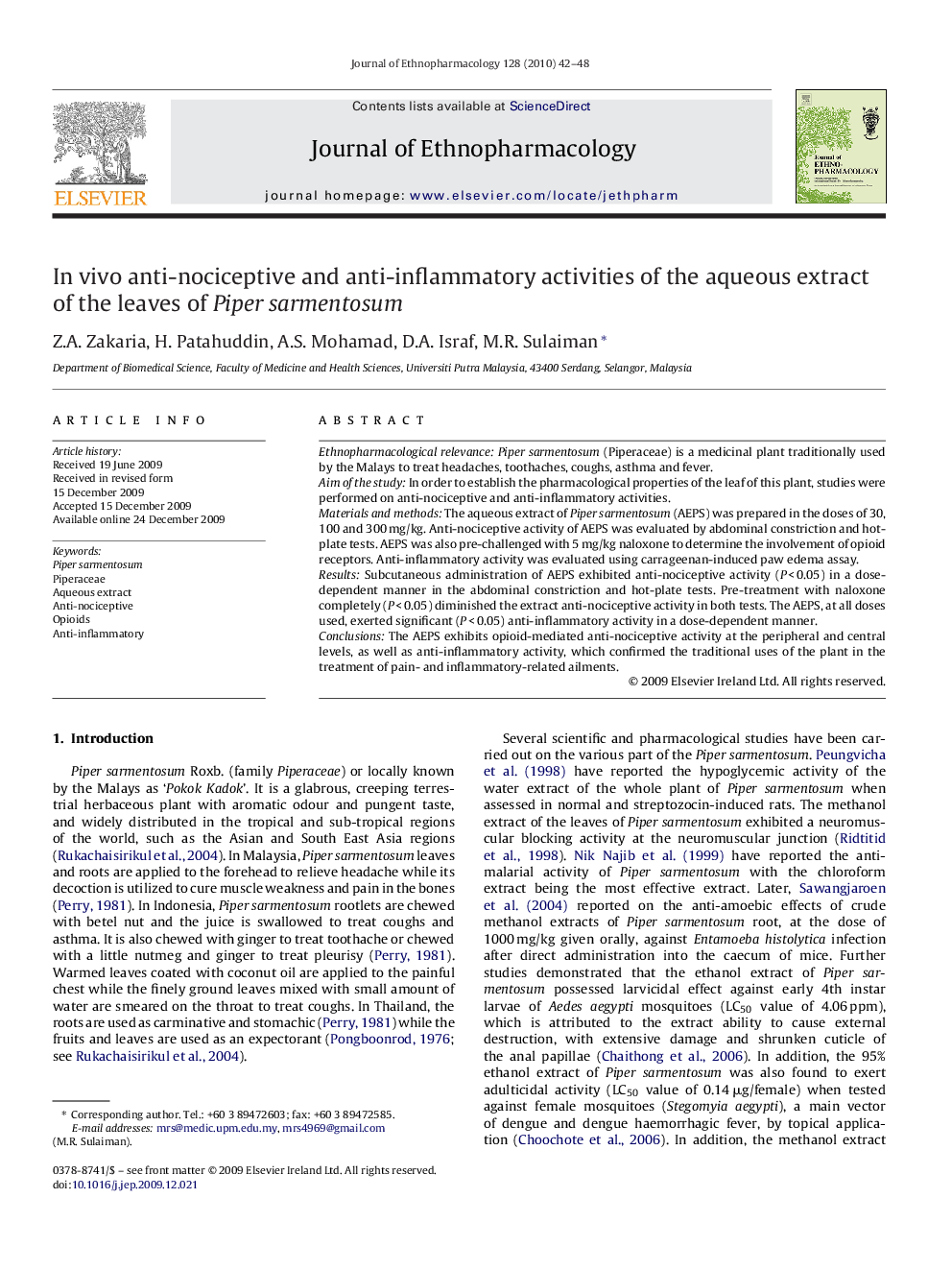| Article ID | Journal | Published Year | Pages | File Type |
|---|---|---|---|---|
| 2546631 | Journal of Ethnopharmacology | 2010 | 7 Pages |
Ethnopharmacological relevancePiper sarmentosum (Piperaceae) is a medicinal plant traditionally used by the Malays to treat headaches, toothaches, coughs, asthma and fever.Aim of the studyIn order to establish the pharmacological properties of the leaf of this plant, studies were performed on anti-nociceptive and anti-inflammatory activities.Materials and methodsThe aqueous extract of Piper sarmentosum (AEPS) was prepared in the doses of 30, 100 and 300 mg/kg. Anti-nociceptive activity of AEPS was evaluated by abdominal constriction and hot-plate tests. AEPS was also pre-challenged with 5 mg/kg naloxone to determine the involvement of opioid receptors. Anti-inflammatory activity was evaluated using carrageenan-induced paw edema assay.ResultsSubcutaneous administration of AEPS exhibited anti-nociceptive activity (P < 0.05) in a dose-dependent manner in the abdominal constriction and hot-plate tests. Pre-treatment with naloxone completely (P < 0.05) diminished the extract anti-nociceptive activity in both tests. The AEPS, at all doses used, exerted significant (P < 0.05) anti-inflammatory activity in a dose-dependent manner.ConclusionsThe AEPS exhibits opioid-mediated anti-nociceptive activity at the peripheral and central levels, as well as anti-inflammatory activity, which confirmed the traditional uses of the plant in the treatment of pain- and inflammatory-related ailments.
Graphical abstractThe aqueous extract of Piper sarmentosum (Piperaceae) exhibited peripheral and central anti-nociceptive, and anti-inflammatory activities.Figure optionsDownload full-size imageDownload as PowerPoint slide
